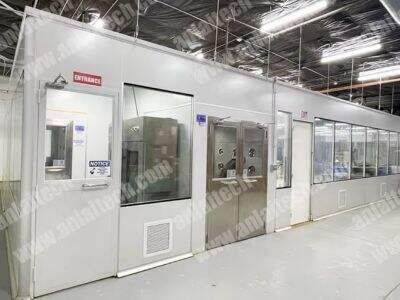It is very crucial to keep hospitals clean. Hospitals are required to use strict regulations, protecting patients from anything that may make them sicker or stiffer, keeps their cleanrooms as clean as possible.
Why It is Important to Follow the Hospitals Guidelines for Cleanroom Maintenance?
Following cleanroom maintenance guidelines in hospitals is essential for containing the transmission of infections and diseases. The iso 5 class 100 cleanroom standardisation is used to ensure that when patients are treated, they are placed in a safe and healthy space. Following these laws can make hospitals look professional and also give patients as well staff a trust.
Critical Aspects of Hospital Cleanroom Regulations
Clean room standards in hospitals refer to the maintenance of cleanliness and control of contamination on all surfaces, equipment, as well as air. This class 100 cleanroom involves consistent cleaning and disinfecting of all surfaces with proper cleaning agents. Moreover, medical facilities should control the quality of air in the cleanroom to meet health norms. Adequate ventilation and filtration is another part of cleanroom regulations.
Top Tips to Maintain Hospital Cleanrooms Compliant
Proper training and approach to cleaning protocols and safety procedures on hospital cleanroom regulations must be in place and everyone has to comply with it. Hospitals need standardized cleaning guidelines to deal with certain specific issues and how often should be cleaned. Hence, adhere to standard inspection and auditing practices so that you can spot non compliant areas in the early stages of things before they get out of hand. Establishing records of cleaning and documentating inspections is also critical to your ability demonstrate regulatory compliance.
Exploring the Functions of Hospital Cleanroom Maintenance Workers
This is also important to keep cleanrooms sterile and safe for patients where the role of hospital cleanroom maintenance staff becomes really crucial. Cleaning and disinfecting as outlined; Monitoring equipment such as air filtration systems. These personnel need to be trained and ascertained well in the techniques of infection control practices and basic good personal hygiene standards to prevent the contamination of the class 1000 cleanroom environment.
7 Steps to Implementing Successful Cleanroom Cleaning Protocols in Your Hospital
Develop a comprehensive cleaning plan. Once the individual operations are understood, hospitals can then pull together these elements into an effective hospital cleanroom cleaning protocol of their own based on: All staff should receive instruction on how to properly clean as well as the safe use of cleaning supplies. To make sure that the correct cleaning protocols are followed and to flag potential problem areas, regular auditing and inspection of disinfecting methods is necessary.
Table of Contents
- Why It is Important to Follow the Hospitals Guidelines for Cleanroom Maintenance?
- Critical Aspects of Hospital Cleanroom Regulations
- Top Tips to Maintain Hospital Cleanrooms Compliant
- Exploring the Functions of Hospital Cleanroom Maintenance Workers
- 7 Steps to Implementing Successful Cleanroom Cleaning Protocols in Your Hospital





